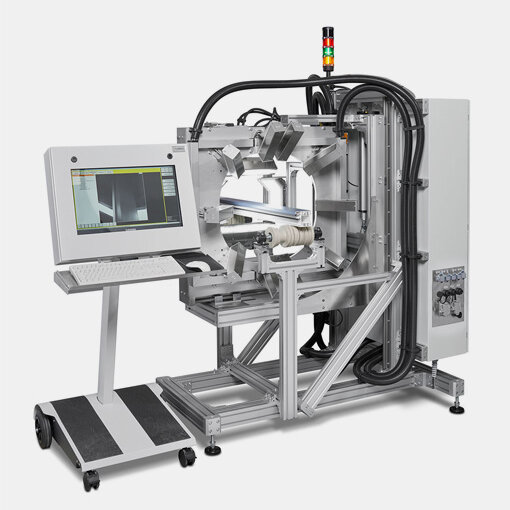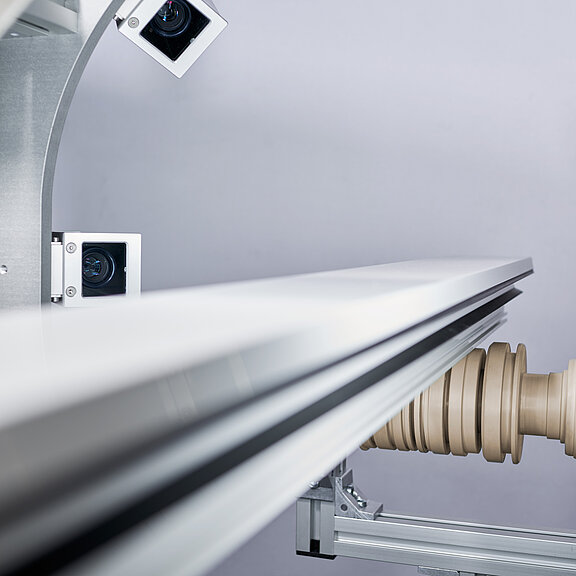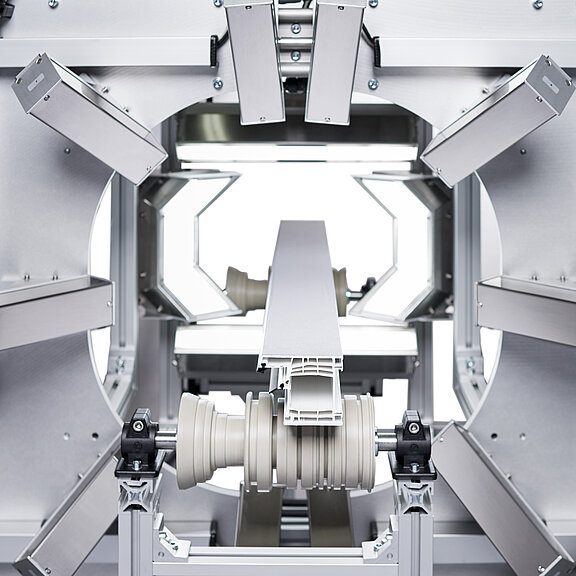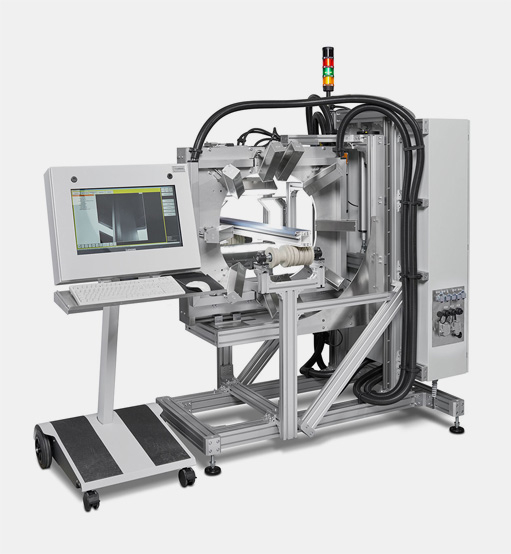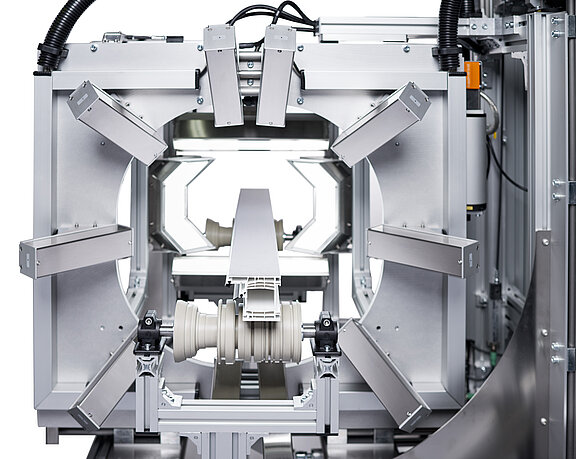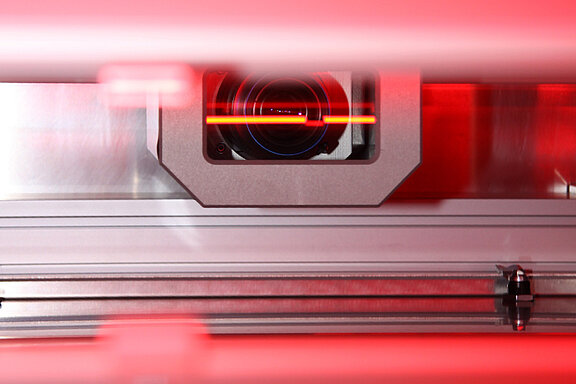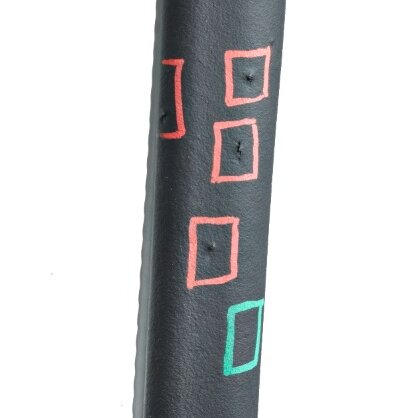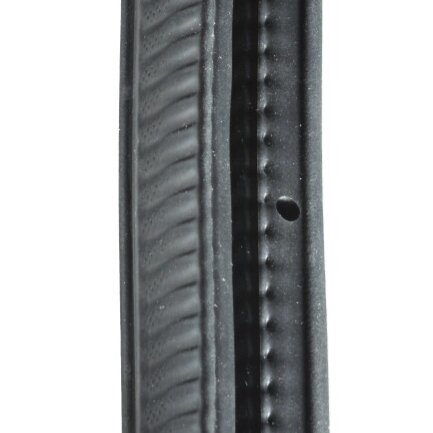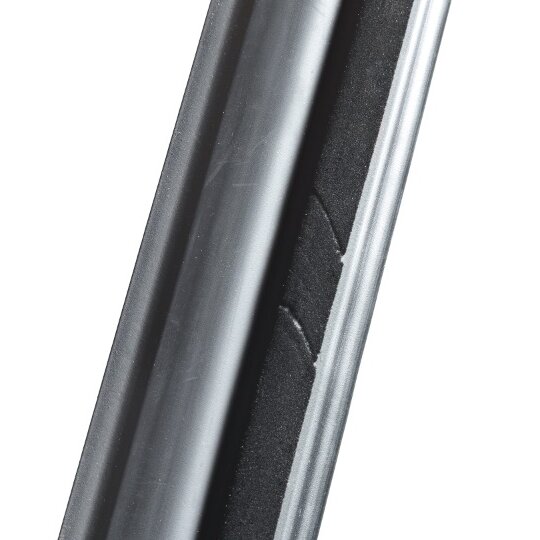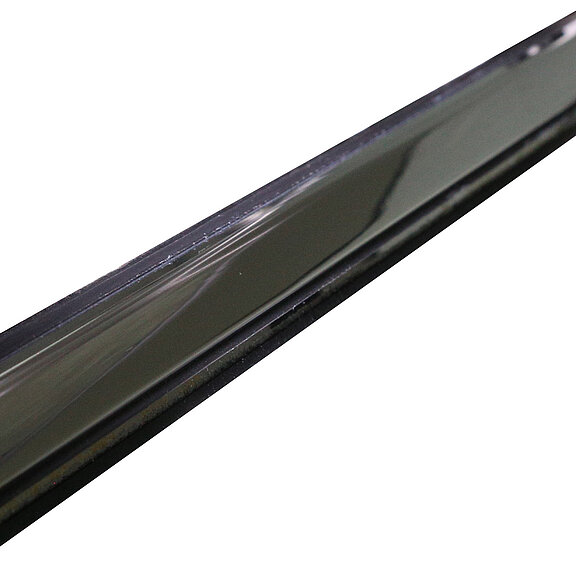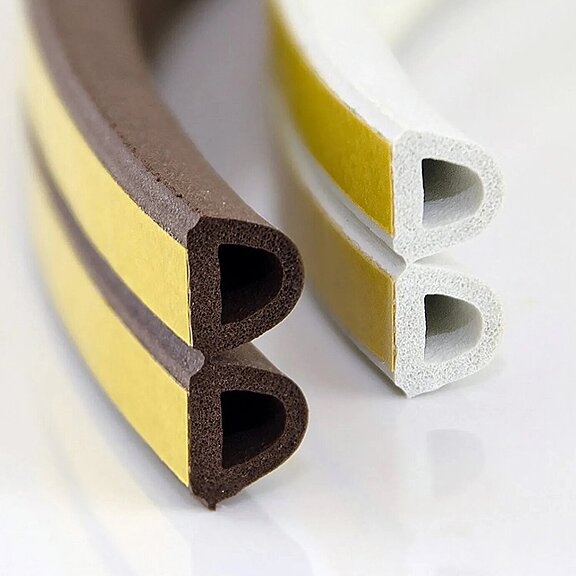Up to 16 high-performance cameras guarantee 100-percent quality control of large profiles in diameters ranging between 250 and 400 mm and more.
The quality data are analyzed and used in process control to optimize plant operation. This makes your processes efficient and economic and ensures highly repetitive production results.
DDM Module (DefectDensityManagement)
Checks the out-of-spec rate according to rules defined based on defect density and defect size.
Optical inline inspection systems have reached a high standard in detecting and classifying surface defects on profiles. However, the contextual evaluation of defects, which includes establishing logical relationships between defect criteria, has so far remained in the grey area.
In numerous specifications, especially those set up by automotive producers, the “ship or block” decision depends on OR-operations. A customer may reject a profile, for example, if over a specified length of the product there is one severe defect or one medium defect plus several small defects.
The Defect Density Management solution, however, weights every single surface defect and sums up the obtained values over a specified length of the product. The inspection system sends out a signal as soon as the value exceeds a defined threshold. The signal can be used to mark out-of-spec sections of profiles or control downstream cutting and sorting equipment.
Drill Hole Control
Measures distances, form and diameter of drill holes.
The Drill Hole Control module checks as early as during the production process whether all venting and drill holes have been made and whether they are all in the right position. The system triggers an alarm as soon as it detects that a drill hole is missing or does not have the correct diameter or form, or that the spacing between the holes is not as it should be.
Especially for automated assembling processes, this type of inspection is paramount as it ensures that, for example, door seals can be installed quickly and reliably. In the past, checking the drill hole positions was a very complicated procedure prone to errors because the high production speeds make it impossible to take a manual measurement of each spacing. As a consequence, manual checks were only made on a random basis. Now, the new module makes it possible for the first time to check the entire profile in an inline process.
Flock Inspection
Detects flocking flaws, such as missing or clumped flocking material, longitudinal grooves and other defect types.
Pixargus developed the module for optical inline inspection of door and window seals as used in the automotive industry. These sealing profiles have to comply with extremely exacting surface quality demands.
The flocking material must be applied highly uniformly in order for the profiles to reliably fulfill their sealing function. As in the vehicles the seals are partly visible, imperfect appearance of the surface may be reason for rejects.
The direct feedback of ProfilControl data into the process control system makes it possible to instantly correct the flocking process, preventing that any poor flocking may continue along the profile.
This ensures that only perfect material is shipped to the customers.
Shiny Surface
Inspects high-gloss surfaces, as of chrome trims. Ideal also for curved surfaces.
What enhances the interior of vehicles or the appearance of stylish household appliances may become a real challenge in quality inspection. High-gloss chrome trims may give objects a dazzling appearance in the true sense of the word. The extremely intensive light reflection makes it very difficult to discern defects on the shiny surface.
To solve this problem, Pixargus’ Shiny Surface module casts structured light onto the high-gloss material surfaces. The pattern of light showing on the surface of the profile suppresses reflection while creating transitions of brightness that allow even extremely small scratches, bubbles or dents to be detected most reliably.
The system follows the exact contour of the product and inspects it over its entire width. The field of vision can be modulated so as to also enable the inspection of curved metal trims.
Multi Extrusion
Upgrade enabling simultaneous inspection of several extrusion strands.
Sealing profiles may also be produced by double-strand extrusion. In this case, the profiles are extruded symmetrically back to back.
To be able to measure the strands separately from each other, Pixargus has developed a special software module and added a dedicated frequency generator to its ProfilControl 7 system. The Multi Extrusion module inspects the geometry and surface of both extruded strands, while the frequency generator measures the speed and provides the optical sensors with data to adjust the image processing rate to the line speed.
Groove Detection
Triggers an alarm when individual flaws turn out to be continuous longitudinal grooves.
Saw Control
Cuts your product to the correct length and cuts out defects with minimal waste.
With its Saw Control module, Pixargus makes cutting-to-length an integrated part of quality control in profile production.
The Saw Control software performs two basic functions. On the one hand, it sets the cutting intervals for the shear. If set at, let’s say, one meter, profiles graded as
defect-free by the quality control system will be continuously cut to this length and discharged from the conveyor belt as ready-to-pack products.
However, in the event that ProfilControl 7 has detected a flaw in the product, Saw Control instantly causes the shear to make an extra cut in real time to remove just the out-of-spec part from the profile.
This minimizes waste and saves time. Thanks to the Saw Control module, out-of spec portions of profiles can be sorted out much faster because the operators immediately recognize them as a short length comes along.


